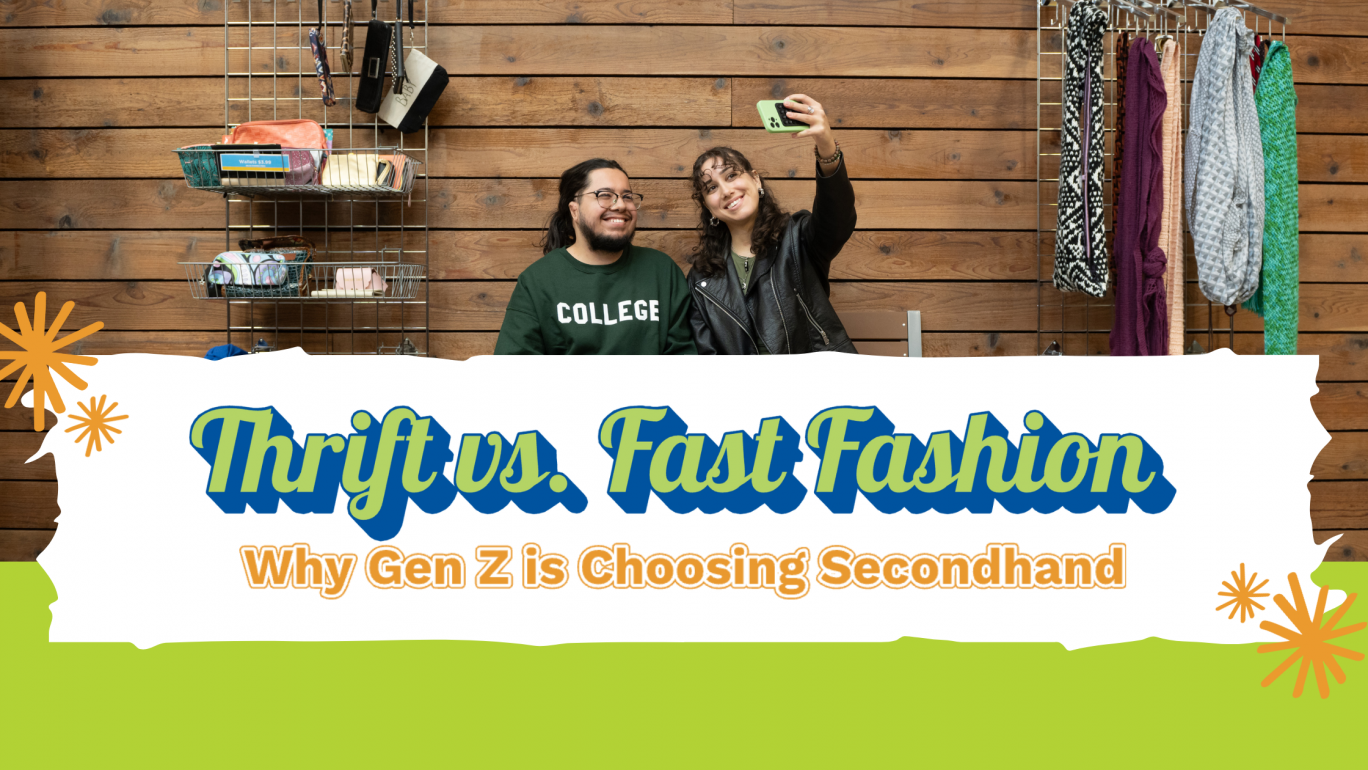As discussions about sustainability become increasingly vital in today’s society, the fashion industry finds itself at a crossroads. The rise of fast fashion—characterized by the rapid production of inexpensive clothing—has raised serious concerns about its environmental impact. In contrast, thrifting, or buying secondhand clothes, is gaining traction as a sustainable and affordable alternative. This shift prompts us to consider: Is thrifting truly a better choice than fast fashion?

A visual representation of thrifted clothing against fast fashion items.
Source: Milieu Insight
Thrifting offers a unique solution to the perils of fast fashion. Unlike fast fashion retailers that deliver cheap, disposable items, thrift shops sell secondhand clothing, extending the life of garments and reducing waste. Thrifting allows shoppers to find one-of-a-kind pieces while supporting the circular economy, wherein products are reused rather than discarded.
One compelling argument for thrifting stems from its significant environmental benefits. Research indicates that the fashion industry is responsible for a considerable portion of global greenhouse gas emissions. By choosing to thrift, consumers are participating in eco-friendly practices, minimizing their carbon footprint associated with clothing production and disposal. It also aids in reducing the demand for new items, thereby mitigating environmental degradation linked to textile manufacturing.
Moreover, Gen Z, which is increasingly conscious of sustainability, is leading the charge toward thrift shopping. In an era where climate change and consumerism are hot topics, many young individuals are turning to secondhand clothes to both save money and make ethical choices. According to a study, 75% of Gen Z shoppers consider sustainable options, highlighting a cultural shift in values.

Comparison between thrifting and fast fashion.
Source: Goodwill of Central and Coastal Virginia
Despite thrifting’s benefits, it does present some challenges. As secondhand shopping gains popularity, some thrift stores find themselves pricing items at rates that can seem counterintuitive to their mission of affordability. This issue can discourage individuals who genuinely seek budget-friendly options. Furthermore, the increasing trend of thrifting among influencers and fashionistas has led to concerns about gentrification in thrift stores. Critics argue that what was once accessible to low-income shoppers is becoming commercialized, diverting the focus away from sustainable practices.
Additionally, the rise of resellers who purchase items from thrift stores to sell at a markup online has sparked debates about the ethics of reselling secondhand clothing. As people navigate these challenges, it becomes crucial to approach thrifting with mindfulness and an understanding of the community’s needs.

A shopper walking through a thrift store full of clothes.
Source: Thrift World
Ultimately, the debate surrounding thrifting and fast fashion is more than just about clothing; it reflects a larger cultural shift towards sustainability and conscious consumption. By opting for secondhand items, consumers can align their purchasing habits with their values, contributing positively to the environment and society.
As we look to the future, it is essential for both consumers and businesses to collaborate in efforts to promote sustainable fashion practices. This includes supporting initiatives that encourage responsible consumption and making thrifting a viable, sustainable choice for future generations.